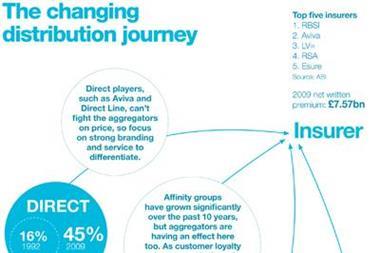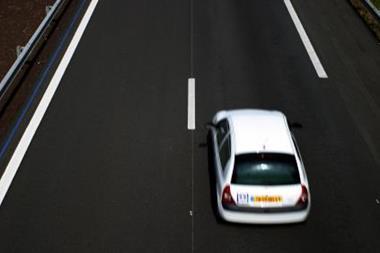When rising claims became too much ...
Motor premiums jumped quickly, and significantly, in 2010. As our charts show (see fig 8 in the data - click on the pdf link, right), some third-party fire and theft policies went up by over 50%. These price rises were long overdue: the market had been losing money hand over fist, with an average combined operating ratio of 122% in 2010.
To quote Zurich chief executive Steve Lewis, the market was “burning capital”, and this is aptly demonstrated by the annual losses of the market’s major players.
But why? As our figures demonstrate, there was an explosion in personal injury claims (see fig 1). While actual road accidents fell by 6%, the number of claims for injuries in these accidents rose by over 13% – clearly demonstrating the impact of claims farming.
Meanwhile, individual claims continue to rise, with a record £13.75m payout in 2010. As the pressures on the market continue, premiums are set to keep on rising.
The government steps in
The impact on customers is clear – and has already aroused the concern of parliament. Motor insurance is a compulsory purchase, and ministers are worried that some consumers could be priced out of the market, particularly young drivers.
A Transport Select Committee inquiry into the sudden price hikes reported back earlier this year. It said: “Motor insurance premiums are rising rapidly, despite the long-term trend towards there being fewer casualties from road accidents. Young drivers, in particular, must pay particularly large insurance premiums.
The high cost of motor insurance can cause a number of policy problems for the government to deal with. For example, it can:
? adversely affect the lives of people who depend on their cars to get to and from work and for social reasons, particularly in areas where the provision of public transport is limited;
? encourage some people to drive without insurance; and
? increase the incidence of insurance fraud.”
The report recognised how personal injury claims have fuelled the rises, and made a number of recommendations to curb them. It called on insurers to do more to tackle fraud, and controversially suggested they should fund a dedicated police unit, with government help.
It also urged action on sharing DVLA information with insurers and brokers to help cut down on application fraud.
The main thrust of the report, however, was on referral fees. These are sums of money that change hands between insurers, brokers and lawyers following motor accidents. An accident victim is referred onto a claims farmer, who will make a claim on their behalf.
At each step, payments known as ‘referral fees’ are made by the businesses that take on the claim and therefore the prospect of a slice of the payout. The report highlighted confusion and a lack of transparency around such fees.
The report was broadly welcomed by the insurance industry, although insurers refused to share details of how much money they make from referral fees, calling instead for an outright ban.
The government has yet to respond to the report, but as premiums continue to rocket and consumer groups lobby, its future interest is assured.
Downloads
The numbers
PDF, Size 0.27 mb






































No comments yet